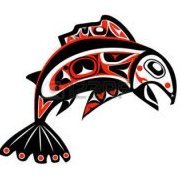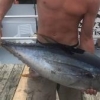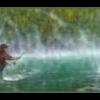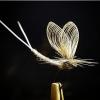Search the Community
Showing results for tags 'nymph'.
Found 62 results
-
Hi. That's my first post. I hope you like it. Materials: Hook: Demmon Competition ST320 BL Fly Jig Hooks Bead: Silver Slotted Tungsten Bead Thread: UTC Thread 70 Denier - Black Tail: Coq de Leon Pardo Flor de Escoba Body: Veevus Holographic Tinsel, Size S - Orange Others: UV Varnish & Black Nail Paint https://youtu.be/b4zCDbmeTJY?si=TbAUrQ16sfReMudL
-
Due Feb 14. That is when a present is due for your significant other, too! First 12 tyers to sign up are in. Any nymph from size 10 down to tiny. Send self-addressed return envelope and stamps or $ to cover postage back to you. Mail to Dr. Darrell Phillips 7890 NW Westside Rd Carlton, OR. 97111 1. Psychoprince RECEIVED 2. Woodenlegs. RECEIVED 3. FishingBobNelson RECEIVED 4. Vicrider RECEIVED 5. Bryon Anderson RECEIVED 6. CPHubert RECEIVED 7. Stabgnid 8. Rick Zieger. RECEIVED 9. Chugbug RECEIVED 10. Dflanagan RECEIVED 11. Niveker RECEIVED 12. Troutramp. RECEIVED 13. Johnw1986 RECEIVED
-
I just moved to South Texas and small crayfish patterns tend to work very well for smallmouth bass, Guadalupe bass, panfish and the Rio Ciclids. They also work for other fish like catfish and trout as well. So I decided to come up with my own small crayfish pattern. Now, I am sure someone has tied something similar to this in the past, maybe even exact. If you know of a fly that is similar or exact that has already been tied, please let me know. Pretty much everything under the sun has been tied before, and someone always seems to lay claim to a pattern. In fact I will regularly have multiple people lay claim to the same fly every time I make a video. But, either way, I thought this combination of materials and way to put them onto a hook was something that would work for this area. So I made it. LOL Ok so, with that aside. This fly will be able to be fished like a nymph, but also like a crayfish streamer as well. I mean, you could float it under an indicator, or put it on as the sole fly, and site cast to fish. Bounce it off the bottom, or swim it right by them. I do think this fly is very versatile in the way you can fish it. You tell me what your experience with it is.
-
Guides choice hares ears are in my opinion one of the best summer months swinging flies. It mimics a caddis emerging perfectly, Its got just the right amount of flash to get the fish's attention, the movement with the soft hackle legs is amazing, and I jig it so it won't get caught on the bottom while starting my swing. I like fishing these in riffles, casting down stream about 60 degrees and letting it swing down. If no bites, take a step down and repeat. This will allow you to cover lots of water and catch more fish especially in the summer. In the spring, summer and fall, caddis hatches start popping off. Caddis provide a little more food for trout in one bite than just midges. Many caddis can get large, some are smaller though. But all of the caddis species will start swimming and floating upward towards the surface to be able to emerge into their final winged form. This process happens very quickly, and therefor the swinging motion of the fly will entice a trout to strike. These are fairly easy to tie, and you can probably tie around 10-15 per hour and fill a box in just a couple hours. Tie them in different color shades as well. Ive been known to use olive dubbing for the body, and also orange. Also you can use a hot spot or no hot spot. Up to you.
- 20 replies
-
- nymph
- swinging fly
-
(and 2 more)
Tagged with:
-
The copper John really does not mimic many species of aquatic bugs. In fact, it doesn't really resemble any of them. I guess one could say it somewhat looks like a dragonfly nymph, maybe even a stonefly. But that is a very abstract representation. However, even though its not an identical representation of any specific food that trout or other fish target in a river or lake, that doesn't mean it won't catch fish. In fact, despite it looking like no organic life, it catches fish very well, in fact sometimes better than hyper realistic flies. Part of this could be due to the curiosity of trout, sunfish, or bass, but another part could be to how this thing fishes. It is very heavy, and possibly catches more fish because it can get down quicker to where the fish are. Another reason is that it is very visible in the water, with its bright copper abdomen, and flash back thorax. Especially helpful when fishing stained water. No matter the reason of why this fly is effective though, because it just is. That being said, it is not the easiest fly in the world to tie, but once you get the hang of it, they can be tied rather easily and quickly. And no one can argue the fact that it is fun to tie.
- 12 replies
-
- copper nymph
- heavy nymph
-
(and 4 more)
Tagged with:
-
Dragonfly and damselfly Nymphs are tasty snacks for may fish species. They are larger than many other aquatic bugs and therefor fish are more willing to move out of their hole for one. Many say an olive wooly bugger is a fly that can mimic a dragonfly nymph and I don't disagree. But where you want something more true to the look of a dragonfly nymph, I find there aren't a whole lot of popular patterns out there. Not saying they cannot be found, and you will always find a few at a fly shop. But when you search for them online, you find some samples of what people have tied, but not really any staple patterns. This I believe is because the vast majority are tying something that is too difficult to create at quantity. You can maybe bust through 5 an hour on a bench and that just isn't fast enough to effectively fill a box for most people. I designed this fly with that in mind. I wanted something simple, and easy. The body will be automatically built in both taper and the right width using just a single marabou feather. It also forms the tail. Same thing with the head and thorax of the fly, simple techniques and quick, easy ways of tying in the materials that are quite simple. So I hope you guys like this, and I hope it becomes a staple in your box especially during the times of year your local river or lake are holding dragonfly nymphs.
-
With your permission, I will open the topic where I will share interesting nymphs on grayling. On such flies we catch in Siberia)) P.S. Ready to answer your questions)
-
Greetings friends, share some simple step by step nymphs Material - Nymph skin Hook - #14 akula Head - bronze + marker
-
Hey it Timmy again be sure to check out my Instagram page @timsflyfishing_pa I am posting today due to weeks of problems with the one and only prince nymph I got the hardest part down (tying in the biots) but i strugle to find a hackle witht the correct length and stiffness to accomidate the pricne nymphs legs. I have tried Indian hen back grab bag hackle and even something is given to me by another fly tyer Mr James Shawley. Still, the fibres where to long 1 and a half the length they should be, im tying these on size 14 standard Daiichi hook. I haven't tried the hackles from underneath a brown hackle cape would these work be I just not looking for the right size? The one cape I was given is good stiffness but too long and the other one I have is good length but stands straight up. I tie it back but I still feel like it should be loose and wavey. Please help me out. If anyone has any extra hackles or materials im a new fly just started and am not asking for handouts just keeping an eye out for someone who might want to help as you all know to be 17 and a fly tyer is difficult when money is tight. I am working on getting a summer job at a fly shop though. Thank you and anyone who might have materials... anything hackle dubbings chennile hooks fur please email me @[email protected] or message me on here. Or if you know anyone with tons of materials im looking anywhere I can. Excuse spelling
- 8 replies
-
- nymph
- prince nymph
-
(and 3 more)
Tagged with:
-
The Zug bug is a fly that works really well, however it doesn't seem to resemble any particular bug specifically. Not sure really what it is supposed to mimmic. Some say caddis (cased or pupa), and while that could be, it really isn't a good representation. However, that means nothing in fishing. Something doesn't have to look identical to a forage for a fish to eat it. And trout love this fly. I find especially in the winter time for some reason. Although I have had them take this fly year round. The fly is also relatively easy to tie compared to some other flashy patterns like copper johns or prince nymphs (both of which also don't mimic anything specific, but trout love them!). As always I am listing all the materials used on this fly below. Hook: Firehole Sticks #609 in size 14 Thread: Veevus 6/0 in Black Tail: Peacock Swords Ribbing: Silver Tinsel Body: Peacock Hurl Hackle: Hen neck or saddle Wing Case: Natural Mallard Flank Head Cement: Original Hard as Hull
-
https://www.youtube.com/watch?v=ChzzREo0ocU I've just received my order of the Firehole stones and had the idea to make the olive beads into an olive with a little bit of red painted added.
-
The full back, flash back, bead head, Pheasant Tail (wow thats a mouthful)... Is a great fly! Everyone fishes the flash back pheasant tail, and there are many videos on youtube about how to tie them, but I have yet to find one as a full back flash back. I see these in fly shops all the time though, with the full flash back, but never seen people tie them. I find these full back versions do better when fish are spunky. The more flash on them actually attracts the aggressive fish more, especially on sunny days. I also like tying these heavy, with a bead head and some lead wraps, but you could omit this in your tie if you want. For me though, I like fishing these as my lead fly, something to get the fishes attention, then drop something a little more subtle behind it, even just a regular pheasant tail, or a simple zebra midge. Something without a bead. The extra weight of my lead fly tends to get the whole rig down deep fast, without the need for lead split shot, so it makes a healthier river and easier day on the water not messing with split shot.
- 2 replies
-
- Pheasant Tail
- nymph
-
(and 4 more)
Tagged with:
-
The hares ear is a fly that has been around for ages, however its still as effective today as it was many many years ago when it was created. The simplicity is really what makes this fly so popular. Its very easy to tie with a very small amount of materials, yet still catches fish! I have no clue where this fly comes from, and no matter who you talk to, the answer changes. Everyone will say definitely they know, but someone else will say no thats not correct. So as much as I would love to give you an origination story, anything I say will be thought of as a complete utter lie and Bull... sooooo no originaton story for this one, sorry guys! More frequently you see these tied with a tail made of rabbit fur. They would clip a small clump, tie that in at the tail, then dub the body, then tie in a section of turkey wing or pheasant tail fibers for the wing case. I find using the Pheasant tail to start with at the tail negates an extra step, so its much easier and quicker to tie. Also I think it looks better as well, and for me fishes a bit better. So its a win win. Not only is this fly easy to tie, but it also looks really good. Its really cool that you are using the same dubbing throughout to create the abdomen and the thorax, but dubbed in different degree's of tightness to create a different look. The abdomen when dubbed tightly really does have the perfect "bugginess" look to it. And the thorax when dubbed loose will be perfect for looking like legs of nymph. This is really one of my favorite nymphs to fill a box with because its not only effective, looks great, and can be tied to mimic a wide variety of bug species, its very easy and quick to tie, and I can fill a box in a matter of a few hours. It also looks equally as nice with a bead head, and as different sizes as well. Heck, for really small ones try tying with a finer dubbing. Speaking of a wide variety of bug species, these are more than likely made to mimic baetis or mayflies, however I know they can mimic caddis as well. Some people even tie these with slight alterations to look like stoneflies. They are very versatile. As always I am providing a list of materials used on this fly Hook: Firehole Sticks #633 size 6 Thread: Veevus 6/0 Tail/Wing case: Natural Pheasant Tail Ribbing: I used Gold flat tinsel, but round or oval tinsel will work better (or even gold wire) Dubbing: Natural color Hares Ear Plus Resin: Solarez "Thin Hard" UV Resin
-
The WD40 was originally designed by Mark Engler. Word on the street says that he designed this while working in a fly shop in the west. He made a pattern that was relatively easy to tie, and worked well in small sizes, which was what was needed on these small fly streams. This fly became so popular at his local fly shop, that he could not keep up with the demand of tying it. So the shop quickly turned to others to tie this fly, and instantly the fly became a world wide success, stocked in all fly shops in the United States, and later the world. So this fly originally uses Wood Duck (the W.D. part of the name). However, wood duck is very expensive for a small amount of it. Also I find that the pattern on it is finer, and softer than Mallard Flank. So I use the less expensive and easier to find mallard flank for this fly. Not only is it more readily available and less expensive than wood duck, it also comes in a wider range of colors. For this specific fly I used the one died to look like wood duck, however you can find this in gray, brown, olive, yellow, exc. The list goes on and on. These range of colors allow you to tie this fly in many colors to mimic your local bug species. So maybe I should call the fly the MF40? LOL So as always I am listing the materials I used on this fly. Hook: Daiichi 1130 in size 18 Thread: Veevus 10/0 in brown Tail/wingcase: Wood Duck Gold Mallard Flank Ribbing: Small/Gold Ultra Wire Dubbing: Brown Hareline Rabbit Dubbing Head Cement: Hard as hull
-
This WD40 variation is one of my favorites. I like heavy flies for lead flies, and tying it with a Tungsten bead really helps it get down deep. Also the flashiness of the Evil Olive fly helps to attract fish a bit more, when flash might be needed. Slightly stained water or when the fish just aren't as picky. Dropping a small midge, traditional WD40 or even an emerger on the back end of this fly helps get the fish that are a little less anxious to bite. So as always I am listing what materials I used on this fly below the video. Also keep in mind that the list of materials here are just suggestions, and ones I used on this specific fly. That does not mean you have to use these exact colors or products. Experiment, and come up with your own version of this pattern if you want. Or use a different hook, or different thread. These are the materials I find work best, but get creative, or just use what you have. Hook: Firehole Sticks #316 in size 14 Hook: Daiichi 1120 Bead: 2.8mm/Gold Tungsten Bead Thread: Veevus 10/0 in Olive Wire: UTC Ultrawire Small/Gold Tail/Wingcase: Mallard Flank Dubbing: Peacock Ice Dub Legs: Pearl Krystal Flash Resin: Solarez "Thin Hard"
- 2 replies
-
- evil olive
- fly tying
-
(and 3 more)
Tagged with:
-
The Frenchie is commonly tied on a jig hook, and usually fished by euro nymphing style. However the same fly can be tied on a traditional nymph hook and is also quite effective fished under an indicator as well. In fact, I had some great luck with this fly on my last trip to the Animas. I tie these small for my local rivers, but you can tie them much larger if you want. The materials I used... Hook: TMC 3761 on size 16 Thread: Veevus 10/0 in Red Bead: 2.8mm Gold Tungsten Bead Weight: .010 lead wire Tail/body: Pheasant Tail Fibers Ribbing: UTC Small Gold Wire Collar: UV Shrimp Pink Ice Dub Glue: Hard as Hull Head Cement
- 4 replies
-
- pheasant tail
- fly tying
-
(and 3 more)
Tagged with:
-
You need a flashy annelid pattern? Well look no further! About as flashy as it gets right here! Bright, noticeable, great for off color water, or just to make a statement! HAHA I use these as attractors. They work well like that. Then I drop a more realistic pattern behind it. They are easy and quick to tie, and quite effective. What more could you ask for? Materials used: Hook: Daiichi 1273 in size 22 Thread: Veevus 16/0 in red Body Wrap: Hot Yellow Pearl Krystal Flash Dubbing: Hairline Rabbit Dubbing in red Cement: Hard as Hull
-
Lets try again. As the northern hemisphere moves towards winter, I want you to think about your favourite late season patterns (typically for brown trout). Some friends and I are heading to Tasmania in March (Late Season in southern hemisphere), and I want to see what you've got. The deal is each of us will tie a pair of flies e.g a dry fly (or emerger) and a nymph that we would like to use come late season. (my combination can be used as an indicator dry / dropper but yours doesn't have to). No size restrictions. Please specify if you prefer to fish your combination on streams or lakes. I'm hoping we'll get a good variation here. Standard rules apply including self addressed return envelope and toe tags, US Dollars or paypal will be accepted for return postage. If you can keep the package as small as possible (less than 20mm or about 3/4in) we should be able to send as a letter, thus minimising the costs of sending international (the standard altoids tin should work for this). Looking for 10 players plus myself. Tie 10 of each pattern and you won't get any of your own ties back. SM - #14 royal coachman and #16 BH hares ear nymph (stream) done 1. Mainard #12 elkhair caddis #16 prince nymph (stream) Received 2. Flytire opal x caddis dry and ice cased caddis received 3. Vicrider wulff and #24 zebra midge address sent 4. Fishing Bob nelsons caddis and hares ear nymph received 5. Dubs Beetle and drowned ant Received 6. mcgx2 PFD emerger and fly guides nymph (stream) Received 7. adam Saarinen - received 8. Rockworm- received 9. LilDave - Caddis combination (#14 EH Caddis plus #12stick caddis) for lakes done 10. Adam saarinen mayfly plus nymph - received Due date at my door in 8 weeks time - that is 18 January 2018. (remember - delivery from US / Canada to Australia typically takes 2 to 3 weeks) I would have made it 6 weeks but that would bring delivery to between Christmas and New Year. Thank you and I look forward to your participation
-
This is a fly I created specifically to fish the San Juan River during a time of the year that the water turns off color. The San Juan River, for those of you who do not know, is a tailwater. And the lake above will turn over in the winter, and turn the water of the river a bit cloudy. During this time, I find a flashy fly will work really well. Most of the year, we fish tiny midge pupa (24-28), but this time of year you can fish a little larger, since the fish are less spooked by size of fly. So this I like to tie in size 18-22 depending on needs. Here is a list of materials I used on this fly. And links to where you can purchase them online. Hook: Daiichi 1273 in size 20 Thread: UTC Ultra Thread 70 in Black Flash: Flashabou in Red Ribbing: Micro Tubing in Clear Head Cement: Solarez "Bone Dry"
-
This fly is one I created to nymph for trout at my local river after the hatch. On the Animas, the rainbow trout and brown trout eggs start hatching, and there are tons of little fry that become food for the larger trout. I used to nymph a white rabbit leech for them, but I wanted to create a more realistic baitfish profile to catch them with. Being completely coated with UV resin, this fly will be very durable, and able to withstand many fish strikes from toothy brown trout. Also, I find this fly to not be too difficult to tie. Materials I used on this fly. Hook: Umqua U301 in size 12 Weight: .015 lead wire Thread: Veevus 16/0 in olive Tail: Marabou in Olive Body Wrap: Tinsel Twist in Olive and Red Back: Peacock Hurl Belly: Pearl Crystal Flash Eyes: 2mm 3D eyes 1st Coat Resin - Solarez "Thin Hard" Formula 2nd Coat Resin - Solarez "Bone Dry" Formula
-
So I fished the Animas, and the guy working at the fly shop recommended a caddis pupae. So I grabbed a few of them in size 14, and went to fish. Sure enough I caught a few fish on it, and it was the only productive fly for the day. So I went home and started trying to tie it. I came up with something close, but its not perfect. However, I think its good enough, and I wanted to show you all the recipe. You can tailor it to your liking. Here is the list of materials I used on the fly. Hook: TMC 2487 in size 14 Bead: 3mm Tungsten Gold Bead Thread: Veevus 14/0 in olive Tail: Peacock Hurl Flash: Pearl Crystal Flash Ribbing: 6x Tippet Body: Hairline Dubbing in Olive Collar: Starburst Dubbing in Olive Back: Baby Bug Back in Brown Head Cement: Solarez "Bone Dry" UV Curing Resin
-
- GTI caddis
- caddis fly
-
(and 2 more)
Tagged with:
-
The Disco Midge is a great fly for fishing slightly off color water. Its flashy enough to catch the trout's attention, and not too flashy to scare them away. For instance, my local tail water (the San Juan River) will get cloudy in the winter due to the lake above turning over. This is the time I start using flashier flies like this disco midge. Hook: Lightning Strike SE7 in size 24 Thread: Veevus 16/0 in black Wrap: Fine Flashabou in Pearl Dubbing: Super Fine Dubbing in Black
-
- disco midge
- midge
-
(and 5 more)
Tagged with:
-
The bling midge is one of the more popular flies on the San Juan river. I generally tie it in black, but it is effective in gray, brown, cream, and a variety of other colors. Its easy to tie, and very effective when trying to mimic a midge. The flash collar attracts fish, and also acts like a wing case. While I am tying this very small, it doesn't have to be tied this small only. For the San Juan River, I generally fish a size 22-26 size midge pattern, but other rivers might allow for larger midges and therefor easier to tie and fish. Hook: TMC 101 size 22 Thread: Veevus 16/0 in Black Flash: Pearl Flashabou Resin: Solarez Bone Dry UV Curing Resin
- 10 replies
-
RS2's are staples in most nymph fishermans box. They are very versatile, and can resemble many types of bugs. From baetis to midges, these are awesome emerger flies. They are very easy to tie, and quite effective. Two qualities that make amazing flies. Here is a list of materials I used Hook: TMC 101 in size 22 Thread: Veevus 14/0 in Black Dubbing: Superfine Dubbing Wing: CDC in Gray
-
Hey folks just rounding off a 4 month fly-fishing trip in new zealand (will make a long post about it in flyfishing section when i get back home). One thing i discovered whas that dozens of flies i had tied in preparation were almost useless as the fish would simply straighten the hook. A bit frustrating (but a nice problem to have at the same time). I previously tied alot on kamasan b100 and they all got straigtened, Six months ago i switched to b110 which have been holding up ok. I tied a dozen nymphs on some carp hooks i had laying around which performed very well. My question is if you guys have any tips on hooks/companies/ebay deals for some very heavy wire hooks suitable for nymphs, I'm looking for sizes 8-12, couple hundred each. Tight lines Hugo






